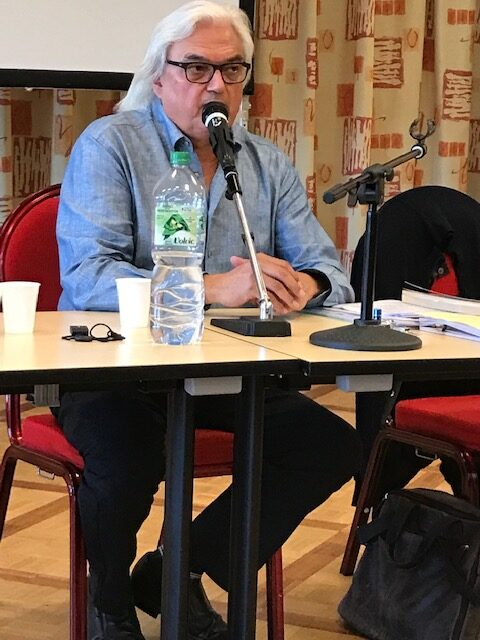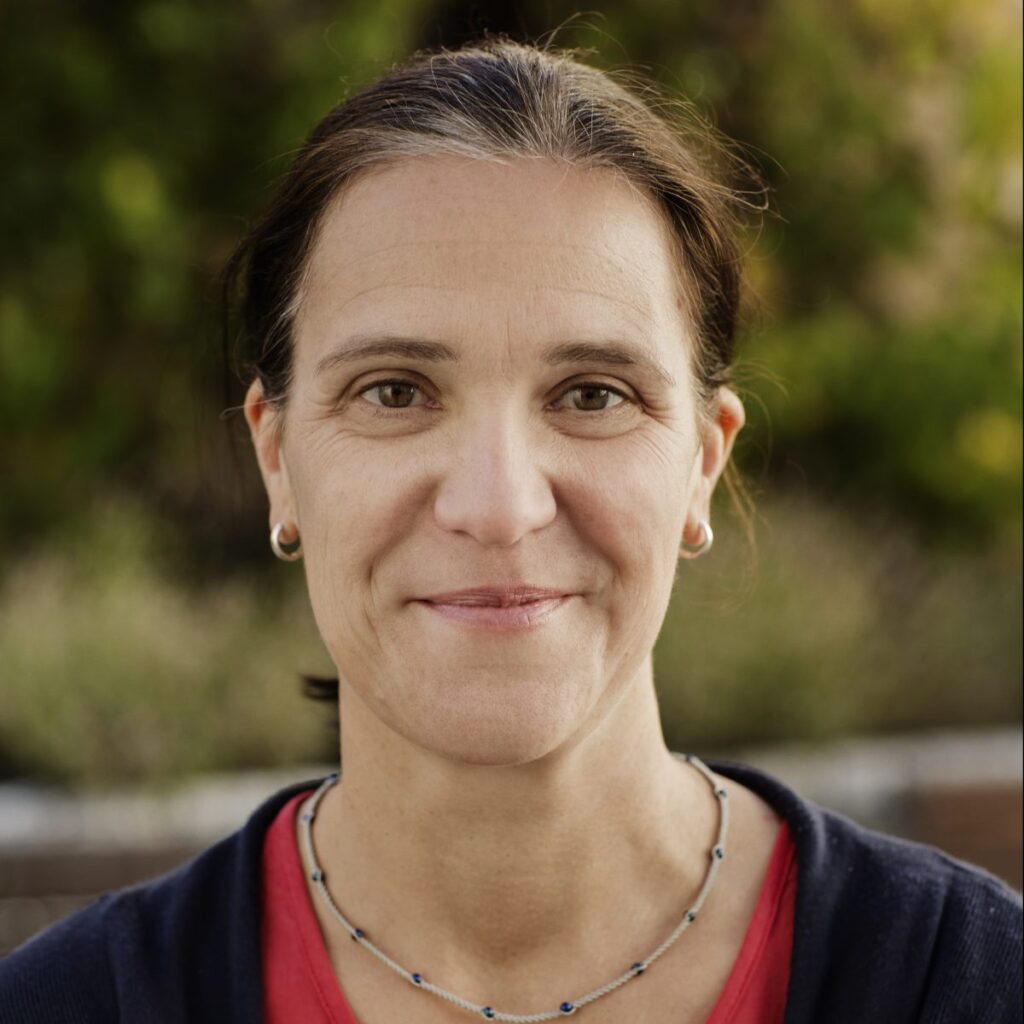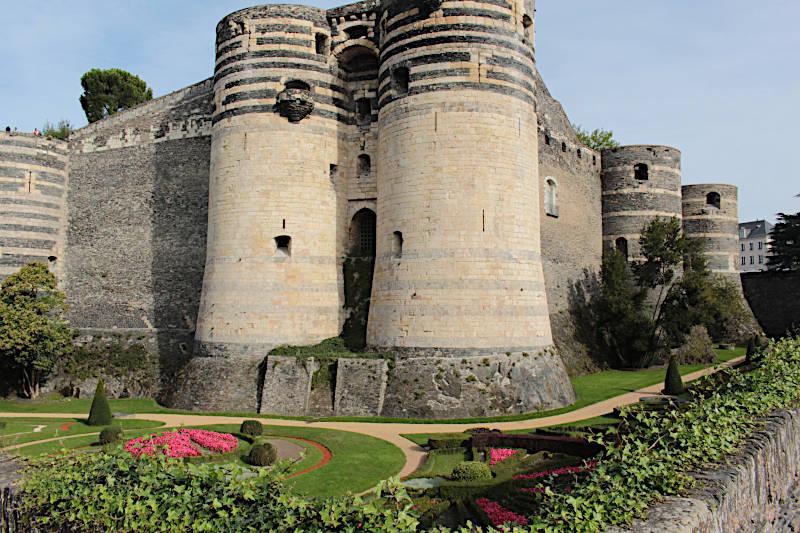The 2021 Colloquy of the Association pour l’Étude de la Pensée de Simone Weil
E. Jane DoeringIntroduction
What follows is a summary of a recent colloquy on Simone Weil held this past October in France. The notes and translations below were prepared by Professor Jane Doering, who serves on our Advisory Board. — rklc

Warmly welcomed in the century-old Hostellerie du Bon Pasteur in Angers, France, thirty members of the French Association pour l’Étude de la Pensée de Simone Weil participated in the 44th annual colloquy, October 23 and 24, 2021.
Weil scholars from all over Europe, plus a representative from the US and one from Paraguay, spent the weekend sharing ideas focused on the intricacies of liberty and oppression in Simone Weil’s religious philosophy. Eleven innovative presentations dealt with the chosen rubric from a wide range of perspectives: techne, architecture, humiliation, algebra, suppression of entire cultures, Spinoza, and Pythagoras, among others. The participants represented varied backgrounds.

The Hospitality Center run by the Sisters of the Good Shepard nestles in the shadow of the 13th-century château fort next to the Maine River in the province of Anjou. This beautiful Pays de la Loire region of north-western France is also home to the Abbaye Saint Pierre de Solesmes, where Simone Weil had a mystical experience.
Robert Chenavier’s opening remarks as President of the Association centered on two quotes that assert the realism in Simone Weil’s conception of liberty and oppression:
“Liberty is the power of choice within the margins left by direct constraint of the forces of nature and by an authority accepted as legitimate. . . . Only in consented obedience is there liberty; nowhere else.”
And
“Man seems to pass by stages, regarding nature, from slavery to domination. . . and cannot lighten the yoke of natural necessity without increasing the burden, in equal measure, of social oppression.

R. Chenavier elaborated on the reality that God gave human beings the choice of renouncing their personal liberty as they persevere within the compact mass of mechanical obedience that composes our universe. God’s gift of supernatural love imprinted in the soul, however, creates a transforming element in the mechanism of obedience, for neither necessity nor liberty is free of limitations.
Oppression is embedded in the structure of society. Consequently, there is a need to imagine a theoretical ideal of liberty for the purpose of engendering effective methodical action toward alleviating the weight of that onerous structure and its abusive practices. In that fashion, an imperfect liberty between its ideal form and the constraints of necessity could be achieved.
The presentations on the following two days showed careful reading by all the participants of the vast array of Weil’s works now available in the annotated Oeuvres complètes, of which Chenavier is editor. I offer a brief overview of three papers selected to illustrate the range of approaches: Thibaut Rioult’s “Faire contrepoids à la nécessité. Pour une nouvelle lecture philosophique du paradigme mécanique; Natalie Calmès-Cardoso’s “Oppression et nécessité subie: l’humiliation comme “fait capital” dans la pensée de Simone Weil,” and Christine Zyka’s “Liberté spirituelle dans l’art : Art roman versus art gothique.” The entire roster of speakers and their subjects are listed on the Association’s website; their papers can be obtained by requesting the speaker’s email.

Thibaut Rioult, an engineer in Paris, explores the paradigm of the lever as a means of managing the double weight of oppression imposed on humankind from nature and society. The steps in his reasoning conclude in an implicit rationale for Weil’s conviction that physical work should occupy the spiritual center of any well-run society. Weil’s use of the lever image posits an analogy for how to live in the world in view of the ever-present sovereignty of necessity and social oppression. Thibaut traces the history of other philosophers’ reflections on this double-edged burden endured by humankind and their acceptance or rejection of techne. Galileo, the “father of modern science,” had studied an anonymous treatise from the fourth and third century BCE that deals with balance, lever, rowing, wheels, transport, and projectiles.

Weil, a reader of Galileo during her studies with Alain, perceived the lever as an instrument for suspending force in many forms; a concept later used in “Science and Perception.” For our French philosopher, a worker managing levers mechanically through action preceded by reflection becomes a counterweight to material force entrenched in the physical cosmos, just as Christ is a spiritual counterweight in the universe.
Weil understood early on that acceptance of the reign of force naturalizes the role of domination in human relationships, thereby creating an uninhabitable world. Her proposition that obstacles to harmonious interactions require, prior to any action, a pause for the contemplation of reality, plus a refusal to use force or to seek prestige in their resolution. This process, which she claims takes on a spiritual aura in human relationships, is the same methodical process used by workers solving mechanical problems.

Natalie Calmès-Cardoso’s discussion of a potential supernatural aspect of humiliation in social relations parallels Rioult’s highlighting of Weil’s spiritual use of the oppressive constraint imposed by the material world. Calmès-Cardoso, a philosopher from Strasbourg, skillfully indicates Weil’s otherworldly insights into the experience of humiliation that can lead to a higher level of reality and can motivate a more intense resistance to loss of self-respect. Weil’s analysis of her own constant humiliation in the workplace led her to evaluate what was gained:
“The capacity to be morally sufficient to myself, to live in that perpetual latent state of humiliation without feeling humiliated in my own eyes, to taste intensely each instant of liberty or of comradery as if it were eternal—a direct contact with life.”
This experience must never be sought; rather, it is the acceptance of a psychologically painful situation that one would prefer at all costs to avoid. Humiliation differs from wounded pride, for it reduces the individual to an anonymous entity. Abusive domination gives a feeling of powerlessness in the face of oppression, which is more intense than social constraint. A perceptive insight comes from Weil’s entry in her Workers’ Journal:
“The essential aspect is not suffering but humiliation.”
Social force differs from the force of nature in its intent to humiliate. In the structure of the workplace, degradation comes from the domineering behavior on the part of the factory foreman, who forcefully imposes subordination. A human being forced to submit to something other than the material that must be manipulated is reduced to servitude. Total subordination to superiors leads to a negation of the value of experience, a rejection of the essence of true liberty: that which comes from the relationship between thought and action. In addition, Weil discovers in her humiliation a capacity for moral obligation to others without any thought of reciprocity.

Christine Zyka, a philosopher from Uppsala, Sweden, examines Weil’s embrace of the spirituality expressed by Romanesque architecture’s humble equilibrium of light and shadows as opposed to the triumphalism exuding from Gothic architecture’s stress on ever-greater height and constant inflow of light. Romanesque art bears witness to the spiritual liberty pervading the Occitanian civilization that prioritized balance over gravity. The keystone keeps the Romanesque arch suspended from gravity, just as Christ provides a counterpoint to the universe. Artistic creation opens reality to supernatural beauty, for great art is supernatural.
Miraculous civilizations cultivate a relationship between artistic production and civilization, engendering a free atmosphere with aspiration and inspiration concerning the destiny of humankind. Such was the Occitanian civilization, which fostered a spiritual purity inseparable from faith and from the destiny of humankind. This spiritual liberty implies a pure obedience to God or to the good of the order of the world. On the contrary, the civilization that engendered Gothic architecture forcefully crushed the God-loving milieu of the Cathars through brutal crusades and a despotic Inquisition, leaving behind few traces of their inspired art, except in the remains of their Romanesque churches. Destroying a harmonious milieu that incorporates the sacred and the profane is criminal in Weil’s eyes, for a milieu holds together the human roots of many sources found in the divine rather than in the world “here below.” A milieu provides balance and energy, incarnation and inspiration, whose nourishment, inspired by the good or God, creates an open relationship to all civilizations not exclusively to one group.

This ideal of blending the sacred and the profane is visible in Romanesque architecture, which embodies a mysticism of partial obscurity, with light being revealed slowly through the shadows. The sacred is the true source of the inspiration of the profane, but Gothic art eliminates the profane, thus distorting the order of the world. Spiritual liberty is nourished by multiple sources, all of which share in the supernatural.
Humankind’s openness to divine inspiration reveals the reality that, given proper conditions and effort, leads to art of the first order. Zyka’s emphasis on beauty’s balance and harmony of opposites in Romanesque architecture complements Rioult’s exploration of the lever and Calmès-Cardosa’s study of humiliation. All three approaches illuminate Simone Weil’s desire to open ways to deflect the inherent drive for oppressive power by consenting to the real while remaining aware of the imprint of God’s love in every soul.
2 Recommendations
